Beopgwangsa Temple - Pohang (법광사 (포항))
17.6Km 7331 2020-03-25
290, Sangeup-gil, Buk-gu, Pohang-si, Gyeongsangbuk-do
+82-54-243-0178
Beopgwangsa Temple is located at the foot of Bihaksan Mountain in the city of Pohang, Gyeongsangbuk-do Province. It was originally built during the reign of King Jinpyeong (579-631) of the Silla Kingdom by Great Monk Wonhyo upon the order of the king.
The temple used to be large measuring 525 kan (kan is a traditional measurement of distance between two columns, about 1.8 meters), but most of its buildings burned down in a fire in 1863. The current buildings were rebuilt in 1952. The site of the old temple is designated as Historical Site no. 493. Some of the remaining relics are a three-story pagoda, Bulsangyeonhwadaejwa (Buddha on a lotus stand), and a twin Ssanggwibu (turtle-shaped stone base of a monument).
Guryongpo Japanese House Street (구룡포 일본인 가옥거리)
17.6Km 24996 2024-07-17
153-1 Guryongpo-gil, Nam-gu, Pohang-si, Gyeongsangbuk-do
Guryongpo Japanese House Street is where the Japanese who came to Joseon lived after the Joseon-Japan Trade Treaty was signed between Joseon and Japan in 1883. Over time, the Japanese grew power over the fishing industry in the East Sea while restricting Joseon's fishing rights. To remember the past pains and events, the city of Pohang preserved 47 wooden Japanese-style houses from the time and named the area "Guryongpo Japanese House Street." It is now a tourist attraction where people can see the traces of Japanese lifestyle during the Joseon period and how the poeple of Joeseon braced the Japanese colonial period. It also attracts many K-drama fans as the area served as the main filming location of the drama "When the Camellia Blooms (2019)." The scenery seen from the park steps received a Korea Landscape Award because of the fishing village, which can be seen at a glance, revealing the daily life of the common people.
Igari Anchor Observatory (이가리 닻 전망대)
17.7Km 0 2023-01-02
Iga-ri, Buk-gu, Pohang-si, Gyeongsangbuk-do
+82-54-270-3204
Igari Anchor Observatory, located in Iga-ri, Cheongha-myeon, Buk-gu, Pohang-si, is an observatory in the shape of an anchor that anchors ships near the beautiful beach and blue sea pines. With a x_height of 10 meters and a length of 102 meters, visitors can see the open sea of Pohang at a glance. It is also a popular attraction visited by many tourists as the main filming location for the popular drama "Run On (2020)."
Guryongpo Beach (구룡포해수욕장)
17.8Km 36104 2024-02-28
6 Homi-ro 426beon-gil, Guryongpo-eup, Nam-gu, Pohang-si, Gyeongsangbuk-do
Guryongpo Beach is a seaside resort located in Homigot, where "Homi" means tiger tail. The crescent-shaped white sandy beach stretches 400 meters in length and 50 meters in x_width, offering pristine waters of the East Sea. It is renowned as a sunrise spot. Guryongpo Columnar Joints and Guryongpo Beach Embankment are notable features, complemented by cafés, restaurants, and accommodation facilities. The area is rich in tourist attractions, including Homigot and Yeongildae.
Oksanseowon Confucian Academy [UNESCO World Heritage] (옥산서원 [유네스코 세계문화유산])
18.3Km 16674 2023-04-17
216-27, Oksanseowon-gil, Gyeongju-si, Gyeongsangbuk-do
+82-54-762-6567
Oksanseowon Confucian Academy was built to commemorate the academic achievements and virtues of Confucian scholar Yi Eon-jeok (1491-1553). It was founded in 1572, the fifth year of King Seonjo’s reign, and received its current name the following year. It was one of the 47 Confucian academies that was ruled out from the Confucian academy abolition order made by Heungseon Daewongun. Although the building structures do not carry significant meaning in architectural aspect, the distinguished space arrangement of the buildings is hard to go unnoticed. Dokrakdang Hall, which was Yi Eon-jeok’s vacation annex as well as his study room, is situated 700 meters away to the north from Oksanseowon.
Homigot Sunrise Festival (호미곶 한민족 해맞이축전)
18.5Km 20817 2022-12-14
136, Haemaji-ro, Nam-gu, Pohang-si, Gyeongsangbuk-do
• 1330 Travel Hotline: +82-2-1330 (Korean, English, Japanese, Chinese) • For more info: +82-54-289-7852~8
Homigot Village, the main venue of the Homigot Sunrise Festival, is located on the easternmost point of the Korean Peninsula. Homigot Village means "a village on a tiger’s tail," in reference to the Korean peninsula looking like a tiger.
The festival includes local cultural performances, a New Year celebratory event, fireworks show, sunrise concert and other diverse performances. Visitors may sample free tteokguk, a traditional New Year’s Day dish. Other events such as kite-flying and launching hope balloons with wishes attached will provide enjoyable moments to reflect on the previous year and create new year resolutions.
Homigot Octopus Festival (호미곶 돌문어 수산물 축제)
18.5Km 4557 2024-04-17
136 Haemaji-ro, Homigot-myeon, Nam-gu, Pohang-si, Gyeongsangbuk-do
+82-54-284-0575
The Homigot Octopus Festival is an annual festival held to celebrate the octopus harvested from the rocky coastal area around Homigot Peninsula. The octopus here are known for their chewy texture and high-quality taste. During the festival, visitors can enjoy freshly caught octopus from the East Sea, as well as take pictures in a vast field of canola flowers that bloom near the coast. Additional programs and experiences related to octopus are planned for the enjoyment of all.
Homigot Sunrise Square (호미곶 해맞이광장)
18.7Km 49402 2023-01-02
20, Haemaji-ro 150beon-gil, Nam-gu, Pohang-si, Gyeongsangbuk-do
+82-54-270-5855
Homigot is located at the easternmost end of the Korean peninsula, in what would be considered to be the tail, if thinking of the Korean peninsula as a tiger. When Kim Jeongho made the Daedongyeojido Map, he visited this place seven times to confirm this area is in fact the easternmost part of Korea. Following the resources of Korea Astronomy and Space Science Institute, the sunrise time of Homigot on January 1 is at 7:32 am, making it the earliest first sunrise of each year in Korea. The plaza was built to commemorate these research findings with the national Sunrise Festival. Nearby attractions include Korea's largest lighthouse, Homigot Lighthouse, established in 1908; Lighthouse Museum; Monument to Commemorate Lee Yuk-sa’s Patriotism; and Daebo Seawater Bath, using pure seawater of the East Sea.
When completed, Homigot Tourism Complex and Homigot Specialized Ocean Leisure Complex will be the largest tourism complex in the eastern coast district. It will include an ocean aquarium, Ocean Ecological Park, Youth Training facilities, beach dome, accommodation facilities, and other various stores as well.
Sangsaeng’s Hand, a two-part bronze sculpture shaped like a pair of hands, was constructed in December 1999. It is a signature symbol of the sunrise festival. The left hand is on the land and the right hand is in the ocean. It was built to give the message that all people are living together by helping one another like Sangsaeng, meaning coexistence in Korean. The base of the platform is an image of the sun and its two round rings refer to harmony. These two hands have memorial sprits of reconciliation and coexistence for celebrating a new millennium.
Homigot Lighthouse (호미곶 등대)
18.7Km 25235 2021-02-18
20, Haemaji-ro 150beon-gil, Nam-gu, Pohang-si, Gyeongsangbuk-do
+82-54-284-9814
Homigot Lighthouse is located at Homigot Cape, listed as one of the 10 most scenic sites during the Joseon dynasty. It was the tallest lighthouse in Korea at the time of its opening on December 20, 1908. The octagonal, six-story building is 26.4 meters high, with a base circumference of 24 meters. It was built using red bricks and no reinforcing rods, designed in the 18th century renaissance style, with gable decorations over the entrance and windows. The ceiling on each floor is sculpted in the shape of pear blossoms, a symbol of the Joseon royalty, while the number of stairs totals to 108, reflective of Buddhist culture.
Cheongha Gongjin Market (청하공진시장 (1, 6일))
19.3Km 11189 2024-09-27
6 Cheongha-ro 200beon-gil, Cheongha-myeon, Buk-gu, Pohang-si, Gyeongsangbuk-do
+82-54-232-4002
Cheongha Gongjin Market is a fifth-day market hold on dates ending in 1 and 6 of every month. From seafood to fresh produce and homemade food, it is full of shoppers and a variety of products. The market served as a filming site for the Gongjin Market in the drama "Hometown Cha-Cha-Cha." Information boards throughout the market clearly indicate the location of the "Hometown Cha-Cha-Cha" filming set and nearby tourist spots throughout Cheongha Market.

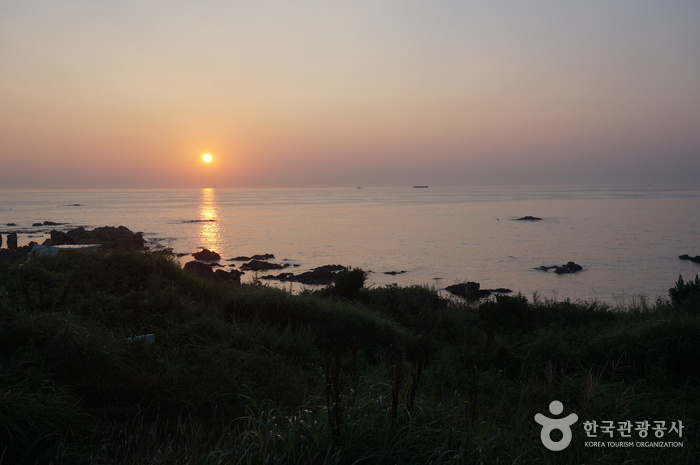
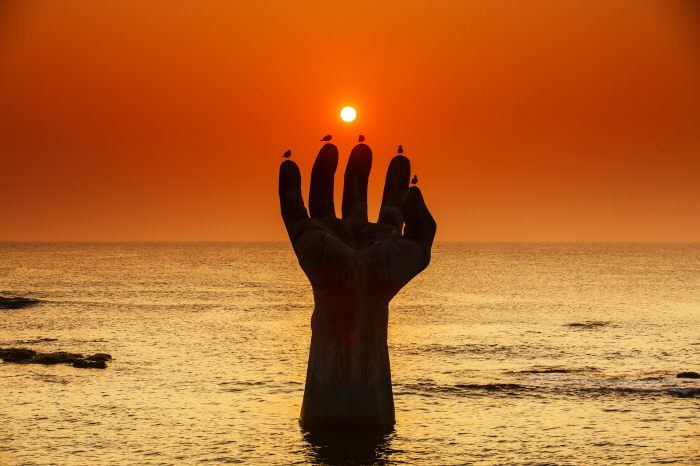
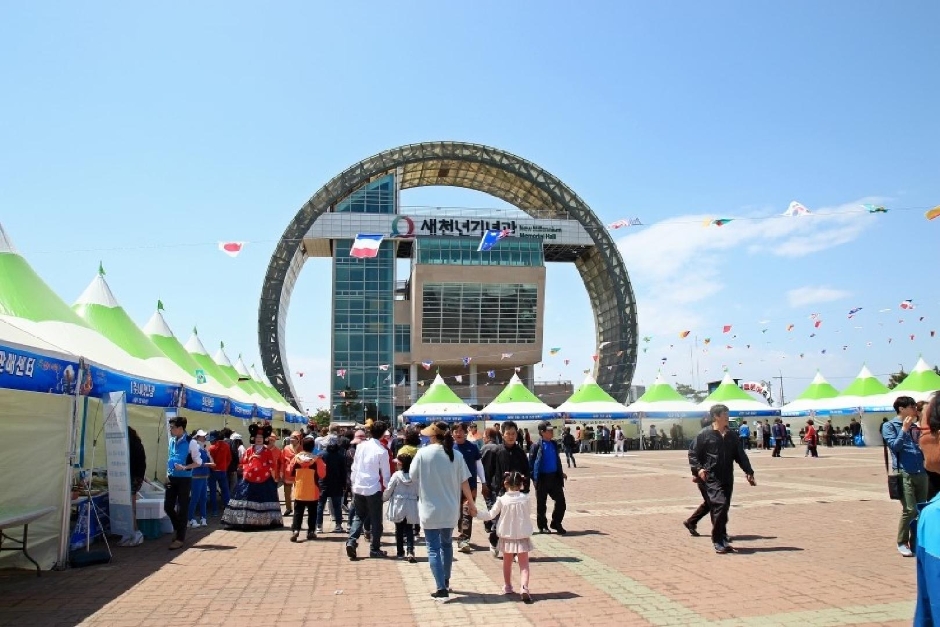
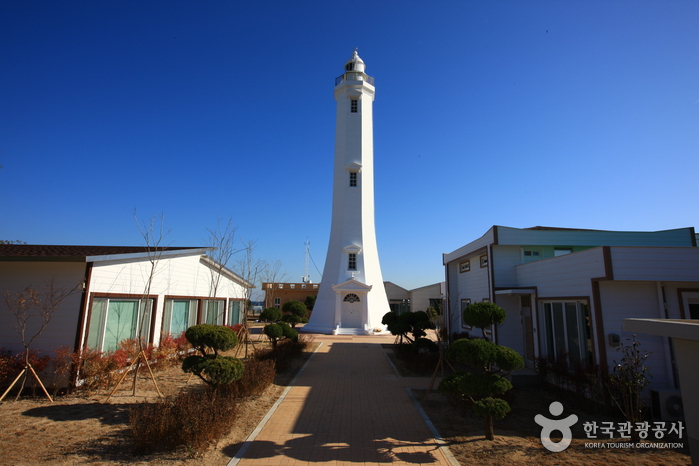
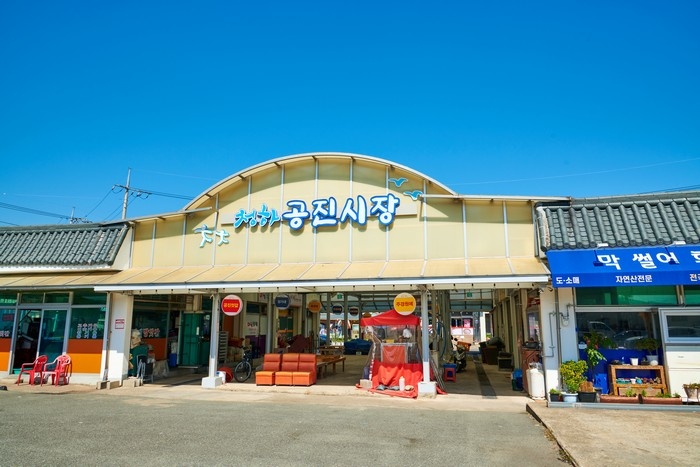
 English
English
 한국어
한국어 日本語
日本語 中文(简体)
中文(简体) Deutsch
Deutsch Français
Français Español
Español Русский
Русский